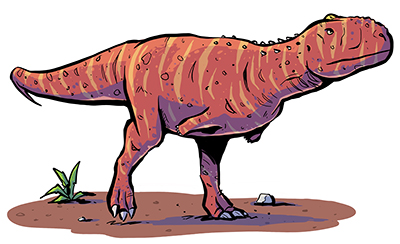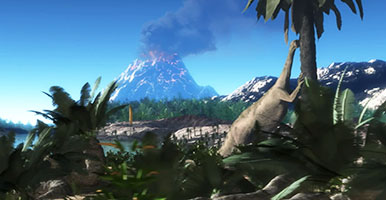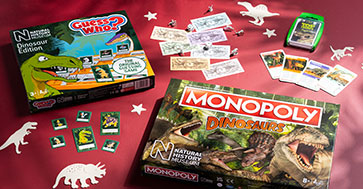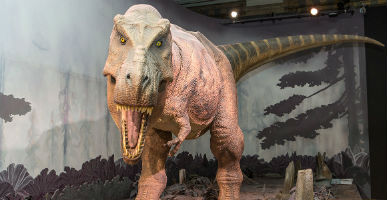Rajasaurus
Rajasaurus
- Pronunciation:
- RAH-juh-sore-us
- Name meaning:
- 'Princely lizard'


- Type of dinosaur:
- large theropod
- Length:
- 6.6m
- Diet:
- carnivorous
- When it lived:
- Late Cretaceous, 72-66 million years ago
- Found in:
- India
Rajasaurus was a large meat-eating dinosaur that lived towards the end of the Cretaceous Period in what is now India. It was a kind of abelisaur, a group that also contains the well-known dinosaur Carnotaurus.
Rajasaurus sported a single short horn on the top of its head. No one knows for sure what it used this horn for, but experts think it might have been for display or for head-butting other Rajasaurus.
Only parts of the skeleton of Rajasaurus have been found. But scientists have a good idea of what the whole animal may have looked like as they have more complete fossils of some of its relatives, such as Majungasaurus.
Many abelisaurs had very short, stubby arms. It's likely that Rajasaurus did too, although we don't know for sure.
How big was Rajasaurus?
At 6.6 metres long, Rajasaurus was one of the larger members of the abelisaurid group. But this isn't massive by Late Cretaceous theropod standards. Dinosaurs such as Tyrannosaurus, Giganotosaurus and Carcharodontosaurus could get much bigger.
What did Rajasaurus prey on?
Rajasaurus was likely an ambush predator able to bring down large animals with its strong neck and jaw muscles. It may also have scavenged for food. Unfortunately, scientists know little about the types of dinosaurs Rajasaurus preyed on.
Where was Rajasaurus found?
Rajasaurus was discovered in the Lameta Formation, a sequence of rocks formed during the Late Cretaceous, when India was an island.
Sitting on top of these rocks are many layers of basalt, a type of rock formed from lava. These layers are called the Deccan Traps. They were created by some of the largest volcanic eruptions ever.
Dinosaurs in India may have gone extinct around 350,000 years before the mass extinction event that wiped out most dinosaurs at the end of the Cretaceous Period. This might have been due to volcanic eruptions.
Taxonomic details
- Taxonomy:
- Dinosauria, Saurischia, Theropoda, Neotheropoda, Ceratosauria, Abelisauridae
- Named by:
- Wilson and colleagues (2003)
- Type species:
- narmadensis

Step back in time
Find out more about dinosaurs' lives and the world they lived in.

Fun and games
Learn more about dinosaurs through toys, board games and activity kits, available from our online shop.

Dinosaurs gallery
Roarrr. Come face-to-face with some of the Museum's most famous dinosaurs.




